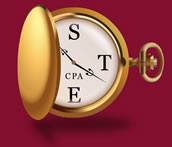Public health leaders, governments, and businesses are considering phased reopening as their countries pass peaks of COVID-19’s initial wave, but 44% of businesses polled in a Gartner survey were unsure how a return to work will play out.
US finance executives polled in PwC’s most recent COVID-19 CFO Pulse Survey said they are prioritising the following measures as their companies seek to reopen:
- Change workplace safety measures and requirements (83%)
- Reconfigure offices and worksites for physical distancing (73%)
- Stagger employee shifts to reduce risk of exposure (58%)
- Make remote work a permanent option where possible (43%)
- Evaluate contact-tracing and location-tracking tools (28%)
- Provide hazard pay and benefits for on-site workers in affected areas (9%)
Protective gloves and masks
CFOs working for businesses operating in China, where the coronavirus originated, described how reopening was done there.
Tim Burghout, ACMA, CGMA, is head of finance and accounting for Metro China, a retail wholesaler that operates 97 stores across China. The company was until recently wholly owned by Germany’s Metro AG, until it sold the business to Wumei, one of China’s largest retailers, while keeping a 20% stake in a new joint venture.
Metro China was deemed an essential business, but in alignment with the local government the retailer’s head office operated with minimum required personnel, approximately 10% of its regular headcount, throughout the country’s coronavirus outbreak from early to mid-February. Metro China increased its HQ staffing to about 50% in mid-February and to full capacity in early March, with strict planned rotations, temperature measurements, and the digital “health-code” application. Stores remained open, and measures to keep employees safe were put in place from the beginning, Burghout said. All store employees had face masks and gloves that met health officials’ standards. Everybody entering the stores had their temperatures measured, he said.
“The company applied the use of thermal infrared body scanners where possible instead of manually measuring people’s temperatures with a laser at the store entrance,” he said. “This supported with lowering possible exposure as somebody is sitting at a safe distance from the entrance looking at the scanner to see if people have the right level of body temperature.”
Also, disinfection efforts increased, he added. “In principle our shopping carts were disinfected the moment customers arrived, or after their shopping. Regular cleaning and disinfection intervals increased significantly in alignment with local government regulations.”
He estimated these measures will remain in place until at least the end of this year.
Hazmat suits and temperature checks
Aidan Goddard, FCMA, CGMA, is vice-general manager and CFO of Kärcher, a German-owned industrial cleaning company. Although usually based at the company’s Changshu office in China’s Jiangsu province, Goddard has been working remotely from Hong Kong since China placed a travel restriction on foreigners entering the mainland.
“In February, we checked the temperatures of all staff before they entered the workplace and supplied face masks for compulsory usage. We turned off the heat to reduce the risk of airborne cross contamination, deep-cleaned our facilities and staff restaurant, and installed hand sanitisers. We did not identify any infected staff members. For most of February, supported by the police, people travelling to work had their temperature checked by healthcare workers dressed in hazmat suits,” he said.
Also, the company worked with local government to speed up the return of key staff to their workplace.
Goddard said he believes businesses should take the temperatures of staff before they enter their workplace and supply them with masks until it is clear the virus is under control. “I would stagger working hours, for example, allowing people to come to work every second day and working from home in between,” he said.
Split shifts and sanitising stations
In Australia, Dicker Data has implemented thermal body temperature scanning to alert the company if anyone is unwell. It has implemented contactless delivery to its reseller network, and cleaners on rotation at its warehouse wipe high-touch areas and equipment. The IT distributor, which sells to more than 5,500 partner resellers, has also installed large sanitising stations in its warehouses.
“With the warehouse, we had to look at splitting shifts and creating two teams and creating some operational redundancy should one team be affected,” said Mary Stojcevski, CFO and executive director of Dicker Data. “We also had a backup plan for the other team to be able to step in. Everyone who was office-based was instructed to work from home.”
Stojcevski said Dicker Data worked closely with its partners to source a thermal scanner and sanitising stations to protect on-site staff in its distribution warehouse.
“The thermal scanner came from a brand that’s looking to partner with us,” she said. “Because of the developing relationship, we were able to get a significant price advantage. It was still quite an expensive solution, but we felt in the context of the overall operation and the long-term engagement with this particular supplier, it was the right thing to do.”
Sanitising and cleaning products came at a premium and were hard to source, said Stojcevski. “When a partner we used to work with for event displays approached us to set up, supply, and refill custom-branded sanitising stations — we jumped on that opportunity. The size and display also makes it very visible, so there’s a clear message to staff that this is being taken seriously.”


Leave A Comment